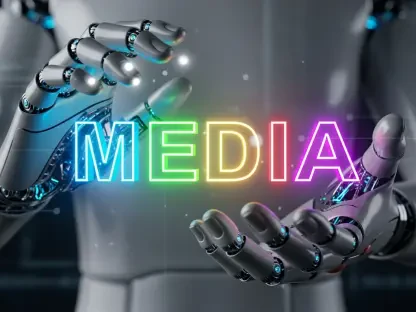Understanding YouTube’s Ecosystem and Ad Policy Framework
YouTube stands as a titan in the content creation industry, boasting over 3 million monetizing channels and having paid out $70 billion to creators in recent years. This platform, a cornerstone for video sharing and digital expression, serves as a vital space where individuals and brands alike build audiences, share stories, and generate income. Its vast scale underscores the importance of policies that govern how revenue flows between the platform, creators, and other stakeholders.
Central to this ecosystem is the YouTube Partner Program (YPP), which allows eligible creators to monetize their content through ads and other income streams. The program sets a benchmark for creators to achieve specific milestones before they can earn, acting as both a gateway and a motivator for growth. It creates a structured path for those aiming to turn content creation into a sustainable career, while also ensuring that the platform maintains a level of quality for advertisers.
Ad policies play a critical role in sustaining YouTube’s free video hosting model, balancing the need for platform revenue with fair earnings for creators. These rules dictate how ads are placed, who profits from them, and under what conditions, involving key players such as creators, rights holders, and advertisers. Technological systems like Content ID further shape this landscape by enforcing copyright claims, often influencing how revenue is distributed and impacting creator autonomy in unexpected ways.
Key Aspects of YouTube’s Ad Policy and Creator Impact
Core Policy Mechanics and Creator Control
At the heart of YouTube’s ad policy is the ability for YPP members to control monetization settings on their videos. As clarified on November 12 of this year, creators in the program can disable monetization on specific content, preventing ads from appearing and allowing them to align their work with sponsorships or audience expectations. This level of control offers flexibility, particularly for those managing sensitive topics or branded collaborations.
However, this autonomy has notable exceptions. Rights holders can override creator settings through the Content ID system, placing ads on videos with copyrighted material and redirecting revenue away from the creator. This often affects content like reviews or educational videos, where fair use might apply but isn’t automatically recognized, leaving creators with limited recourse beyond manual disputes.
A significant distinction exists between YPP members and non-members. For creators not enrolled in the program, YouTube reserves the right to place ads on their content without sharing any revenue. This policy, while supporting the platform’s operational costs, creates a disparity where early-stage creators contribute value without financial return, highlighting a structural challenge within the ecosystem.
Trends in Monetization and Revenue Opportunities
Monetization trends on YouTube have evolved significantly, with the platform introducing 10 diverse revenue streams for YPP members earlier this year, including options like Channel Memberships and Super Chat. These alternatives provide creators with ways to earn beyond traditional ads, reducing dependency on fluctuating ad rates and catering to varied audience engagement models. Such innovations reflect a strategic shift toward creator sustainability.
Creators are increasingly balancing ad revenue with sponsorships and other income sources to diversify their earnings. This approach allows them to mitigate risks associated with policy changes or Content ID claims while building more resilient financial models. Strategic planning around these opportunities has become essential for maintaining a stable income in a competitive digital space.
Data on monetization thresholds reveals the high bar set for aspiring creators, requiring 1,000 subscribers and either 4,000 watch hours for long-form content or 10 million Shorts views within 90 days. These metrics shape growth trajectories, often delaying financial rewards for new entrants. Looking ahead, these standards may continue to influence how quickly creators can scale, pushing them to focus on audience-building strategies that align with platform priorities.
Challenges Faced by Creators Under Ad Policies
Navigating YouTube’s ad policies presents several hurdles for creators, particularly around control over ad placement. Content ID claims frequently limit autonomy, especially for those in niches like education or reaction videos, where copyrighted material is often used under fair use. Without automated systems to assess transformative content, creators face revenue loss or lengthy disputes, disrupting their workflow.
Non-YPP creators encounter a stark financial disadvantage, as their content can be monetized by YouTube without any compensation. This dynamic can deter new talent from persisting on the platform, as months or years of effort yield no direct return while contributing to platform revenue. The gap between effort and reward remains a pressing concern for those at the start of their journey.
Potential solutions to these challenges include enhancing dispute mechanisms for fair use claims, ensuring quicker and fairer resolutions. Additionally, policy adjustments to offer limited monetization options for early-stage creators could bridge the gap for non-YPP members. Such changes might foster a more inclusive environment, encouraging sustained participation across all levels of experience.
Regulatory and Ethical Dimensions of Ad Policies
The regulatory framework surrounding YouTube’s ad policies is heavily tied to copyright and intellectual property laws, with Content ID serving as a primary tool for rights holder protection. This system, while effective in safeguarding content owners, often places creators in a reactive position, navigating claims that may not always account for nuanced legal exceptions like fair use. The balance between protection and creator rights remains a complex issue.
Ethical concerns also arise, particularly around the perceived exploitation of non-monetized creators whose work generates ad revenue for YouTube without personal benefit. Transparency in how revenue is distributed and why ads appear on certain content is often lacking, fueling distrust among some community members. Addressing these gaps is crucial for maintaining a fair digital ecosystem.
Efforts to improve clarity, such as through liaisons like Rene Ritchie, show YouTube’s commitment to better communication. However, discrepancies between real-time clarifications and official documentation in the Help Center continue to hinder compliance and trust. Bridging this divide with consistent, accessible resources could significantly enhance creator confidence in navigating ad policies.
Future Outlook for YouTube’s Ad Policies and Creator Ecosystem
Looking toward the coming years, YouTube’s ad policies may evolve to offer greater empowerment for creators, potentially through refined systems for evaluating fair use in Content ID claims. Such advancements could reduce friction between rights holders and content producers, fostering a more collaborative environment. Policy tweaks might also address creator control over ad placements more comprehensively.
Emerging tools and alternative revenue streams are poised to disrupt reliance on traditional ads, offering creators new ways to monetize. Innovations like enhanced collaboration features or integrated shopping options could redefine income models, aligning with global trends where diversified earnings are becoming standard. These shifts may lessen the impact of ad policy constraints over time.
Platform competition from entities like TikTok and Twitch, alongside economic factors, will likely influence future policy adjustments. As creators explore alternatives with different monetization structures, YouTube may adapt to retain talent through more favorable terms. Additionally, a focus on content quality standards and innovative features could drive long-term sustainability, ensuring the platform remains a leader in the creator economy.
Conclusion and Recommendations for Creators and YouTube
Reflecting on the insights gathered, it becomes clear that YouTube’s ad policy serves as both a catalyst for growth and a source of friction for creators. The empowerment offered to YPP members through monetization control stands in contrast to the challenges posed by Content ID exceptions and the disparities faced by non-members. This duality shapes the experiences of millions within the platform’s ecosystem.
Moving forward, actionable steps emerge as vital for progress. YouTube could prioritize enhanced communication channels, ensuring policy updates reach creators through clear, unified resources rather than fragmented social media clarifications. Advocating for fairer monetization options for non-YPP creators also surfaces as a key recommendation to support early-stage talent.
Streamlining dispute processes for Content ID claims is another critical suggestion, aiming to reduce delays and revenue losses for creators. For creators, diversifying income beyond ads and staying informed on policy nuances prove essential strategies. If YouTube continues to champion transparency and support, the potential for stronger partnerships and mutual growth looks promising, paving the way for a more balanced digital content landscape.









